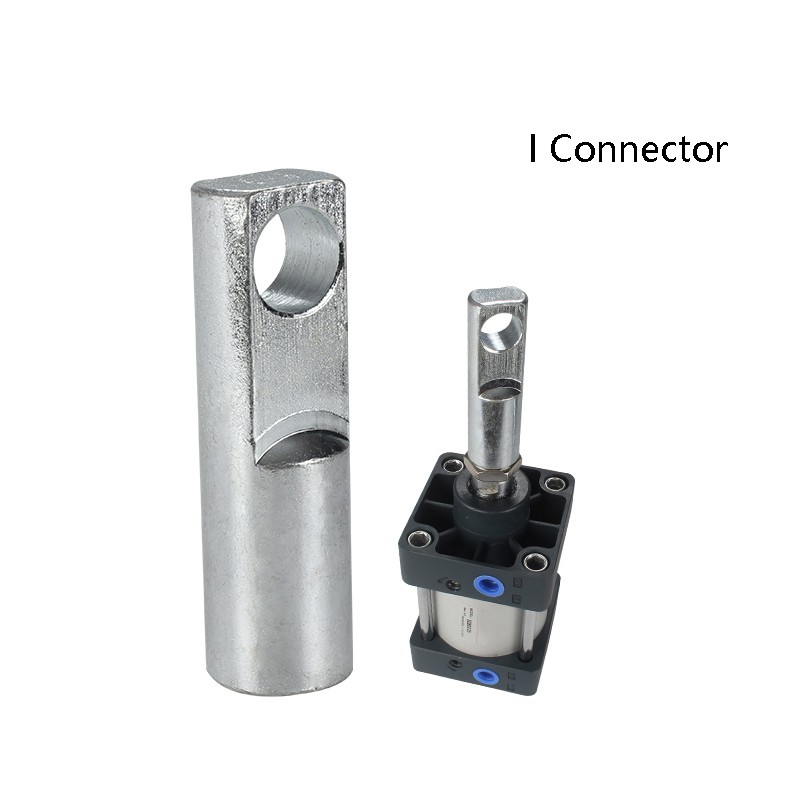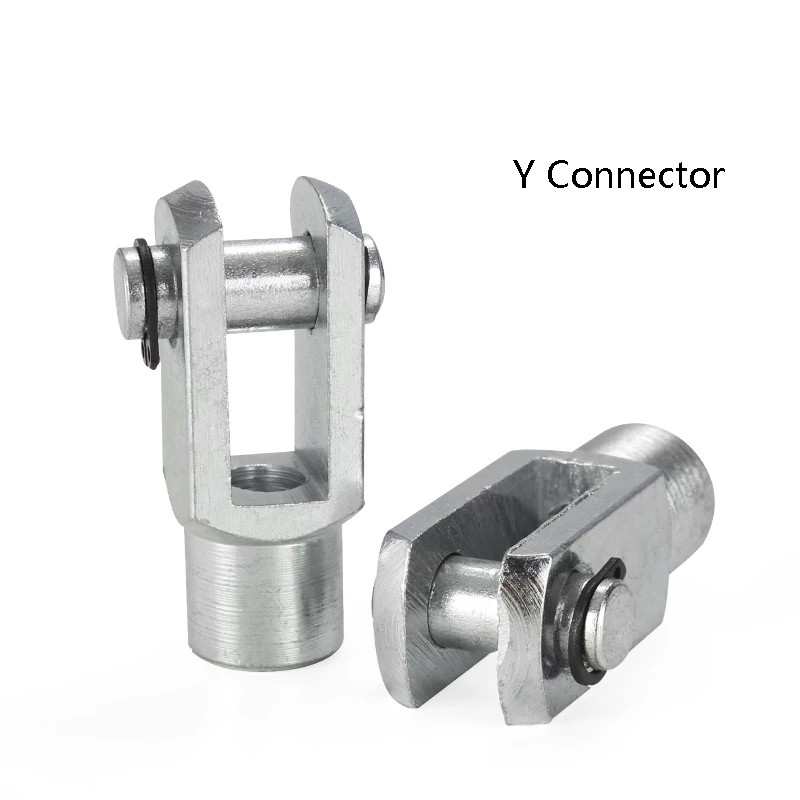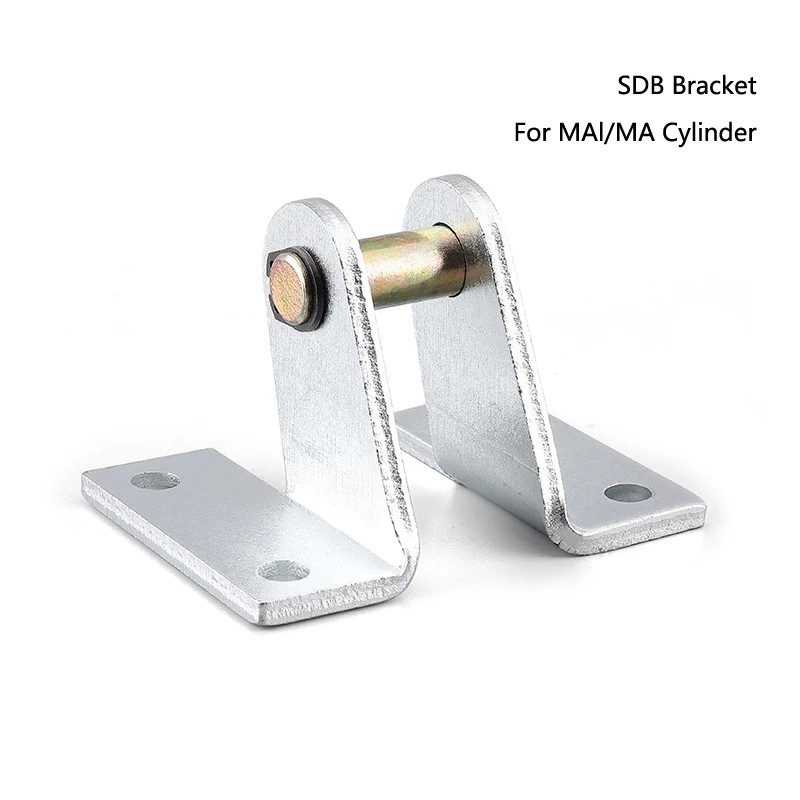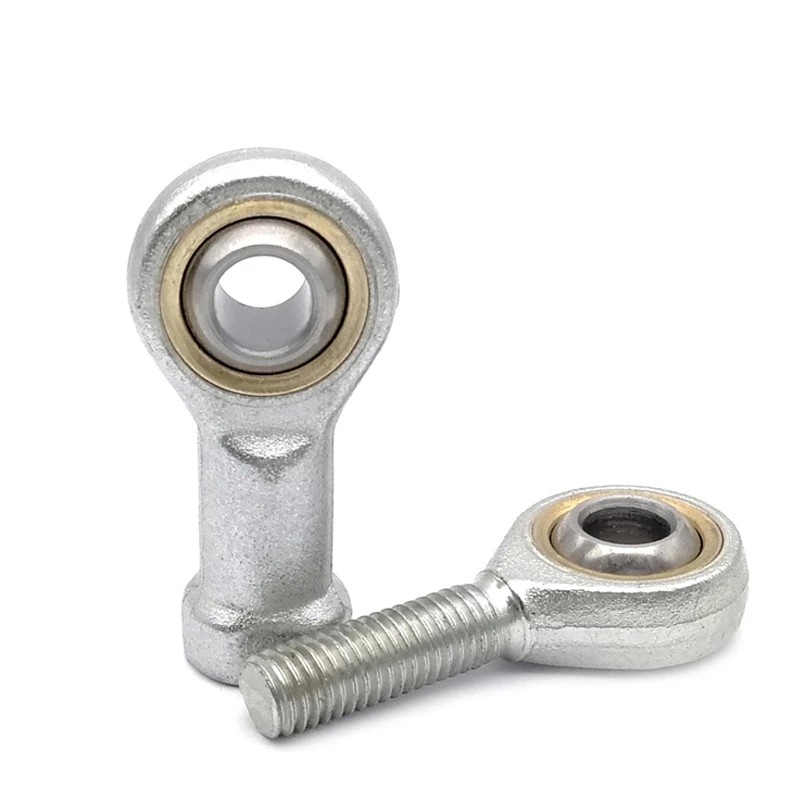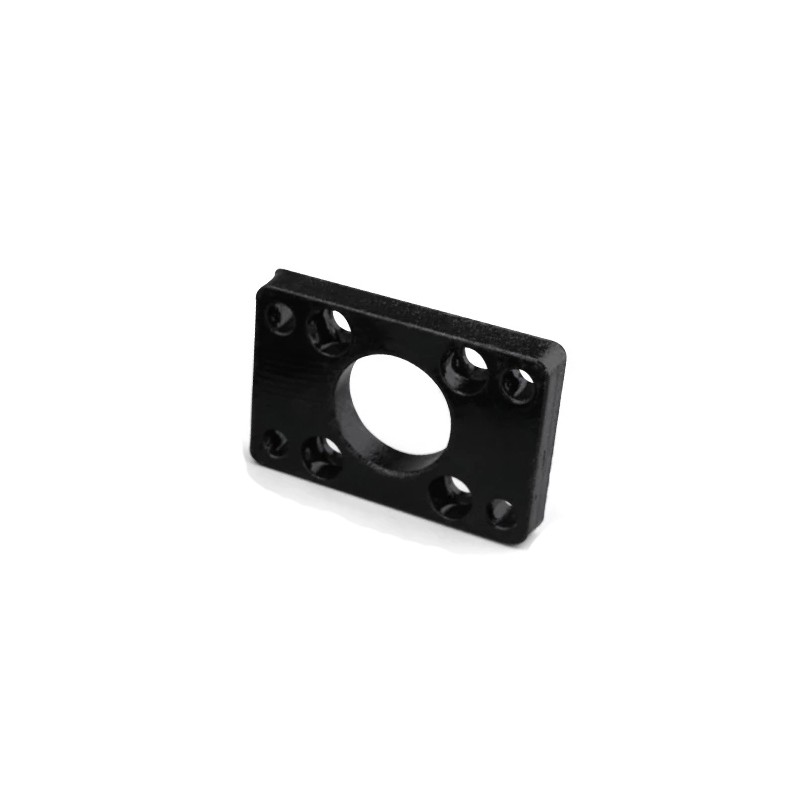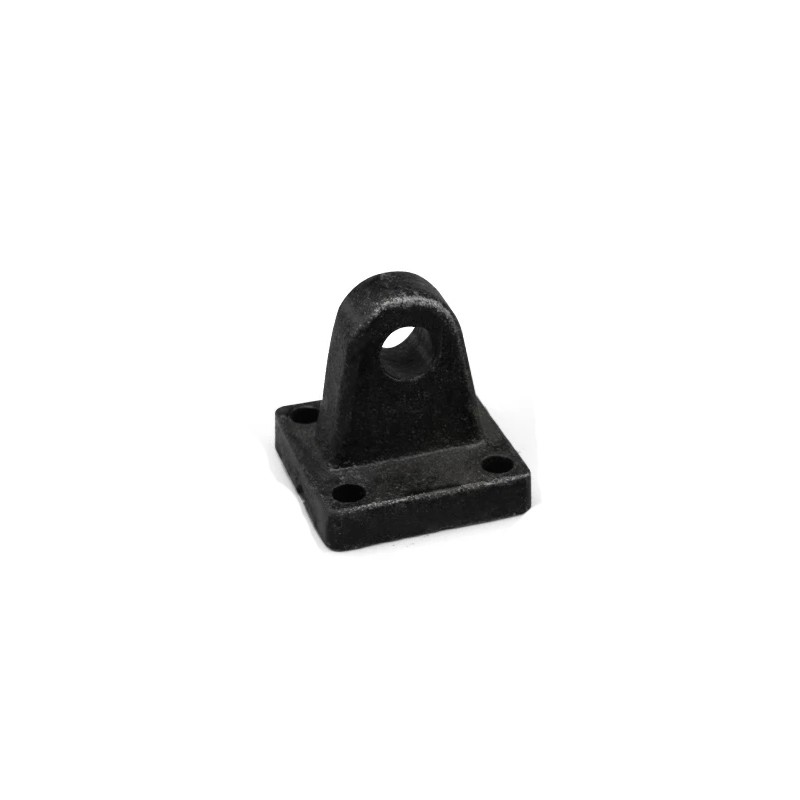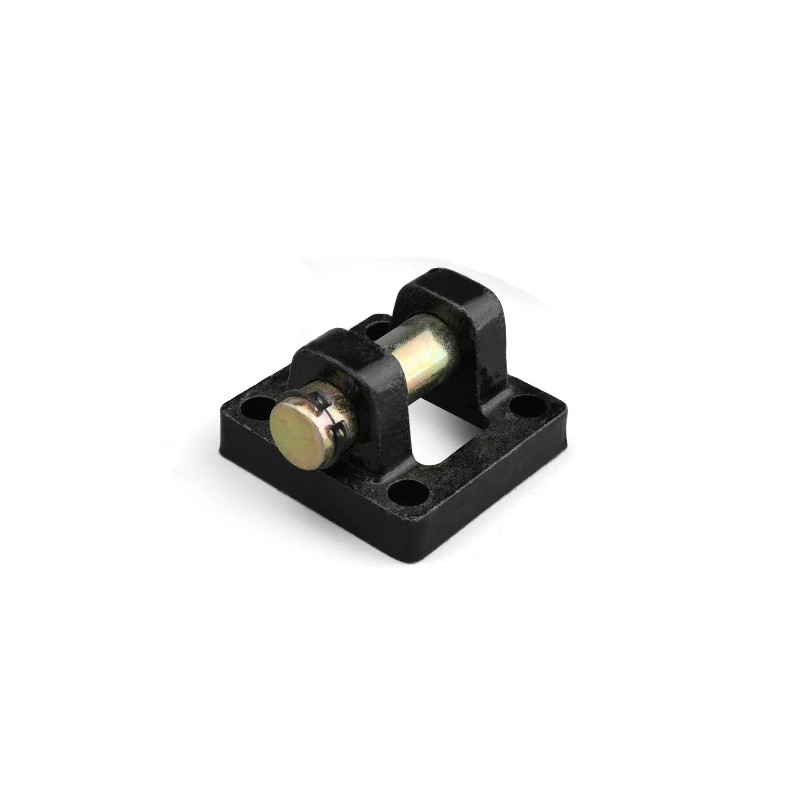Cylinder Accessories & Component
When it comes to pneumatic cylinder accessories, we must delve into an essential realm that complements the prowess of pneumatic actuators or air cylinders. The accessories enhance the functionality and usability of cylinders, aligning perfectly with the industrial needs. Yueqing Right Pneumatic Co., Ltd. (RIH), being an expert in this field, offers a plethora of pneumatic accessories tailored to meet various demands. Welcome buyers or dealers to contact us, we will provide you with the best service!
Pneumatic Cylinder Accessories
Pneumatic cylinders are at the heart of many industrial applications, from textile to papermaking. Enhancing them with the right accessories not only optimizes their performance but elevates the entire system to new heights.
1. Mounting Brackets:
These accessories allow the pneumatic cylinders to be installed in various orientations, ensuring the optimal positioning within the system. Like a perfect pair of cufflinks, they add finesse to the fitting.
2. Sensors:
In the era where data is king, sensors act as the intelligence agency of your pneumatic system. They track the piston position, speed, and other vital statistics, keeping the cylinders in check and your operations smooth as silk.
3. Flow Controls:
Want to have a control that's as fine as aged whiskey? Flow control valves give you mastery over the speed of the pneumatic actuators (air cylinders), providing the right tempo for your industrial dance.
4. Seals and Gaskets:
These accessories are the silent guardians, the watchful protectors of your cylinders. Ensuring no air escapes, they are the unspoken heroes that keep your pneumatic equipment at the top level of domestic markets.
Air Cylinder Accessories
1.Mounts
Just as the stage supports the performers, mounts provide the foundation for air cylinders, ensuring stability and alignment. With the right mount, an air cylinder sings its mechanical tune with precision.
The Styles: Different Sets for Different Scripts
The Styles: Different Sets for Different Scripts
Flange Mounts
Highly rigid and often used for heavy loads, flange mounts are like the sturdy stage platforms that can handle any act, no matter how dynamic.
Clevis Mounts
These are versatile, allowing for angular motion and often used in applications requiring pivoting. Think of them as the rotating stage elements that add dynamism to a scene.
Trunnion Mounts
For applications that require support at the head or cap end of the cylinder, trunnion mounts come into play. They are like the backstage ropes and pulleys that keep the scenery in place.
Foot Mounts
These are free-standing mounts typically used when the cylinder is not subject to strong forces during its operation. They're the equivalent of lightweight, movable stage props.
Centerline Lug Mounts
This type ensures alignment and prevents the cylinder from twisting, much like how stage weights keep set pieces from wobbling.
2.Seals and Gaskets
The vigilant sentinels that guard against leaks, these components are the unseen heroes, ensuring that air pressure is maintained at optimum levels. Their flawless performance is key to the efficient symphony of movement.
3.Sensors
The watchful eyes of the system, sensors detect position, speed, and pressure, allowing for fine-tuned control and optimization. Imagine them as the conductor, guiding the ensemble to a perfect performance.
4.Fittings and Connectors
These are the handshakes and nods between various elements in a pneumatic system. Ensuring smooth transitions and connections, they're like the impeccable timing between different sections of the orchestra.
5.Flow Controls and Valves
With the grace of a seasoned maestro, these accessories control the flow and direction of air, allowing for the delicate control of speed and force. Their mastery over the medium creates the dynamic crescendos and diminuendos of mechanical motion.
What is pneumatic cylinder valve?
A pneumatic cylinder valve is essentially a control mechanism that manages the intake and exhaust of compressed air in a pneumatic cylinder. By dictating when and how much air enters or leaves, the valve controls the cylinder's movement, speed, and direction.
Types of Valves: The Different Batons
1.Directional Control Valves
These valves control the flow direction of the air. With options ranging from 2-way to 5-way, they are the workhorses of pneumatic control.
2.Flow Control Valves
Like a conductor adjusting the tempo, these valves control the speed of the cylinder by adjusting the rate of airflow.
3.Check Valves
Allowing flow in one direction and preventing backflow, these valves are the gatekeepers of the pneumatic system.
4.Pressure Control Valves
Designed to control the pressure of the air entering or leaving the cylinder, these valves ensure that the system operates within safe limits.
6.Rods and Bearings
The sturdy backbone of the cylinder, these elements ensure smooth, frictionless movement. Their robust performance under pressure is akin to the unwavering rhythm of a percussion section.
7.Maintenance Kits
These are the tuning tools, the polish, the rosin for the bow. Maintenance kits keep the system performing at its peak, ensuring that every note, every movement is a virtuoso performance.
Why Choose RIH?-Leading Pneumatic Cylinders Manufacturers and Suppliers
Yueqing Right Pneumatic's products, including pneumatic cylinder accessories, are a top-level choice in the domestic market, widely recognized and trusted by users across industries like textile, chemical, and electric power. With well-equipped testing facilities, strong technical force, and a team of experts devoted to development, RIH promises first-class products and satisfying post-sale service.
Most replacement parts are stocked, and they can be shipped within 7 days of your order being placed, all with a one-year warranty.
For the OEM and ODM services you require, or if you want to explore the boundaries of pneumatic innovation further, you are warely welcome to contact us for future business relationships and mutual success!
So, whether you're an old customer or a new prospect, buckle up your cylinders with RIH's accessories. Your pneumatic system will thank you with efficient and seamless operation. Feel the power of air, harnessed right!
At "RIH," we understand that air cylinder accessories are not just supplementary components; they're essential players in the game of industrial automation. They complement air cylinders like a good vintage pairs with cheese, providing the refinement and efficiency that set you apart in industries such as textile, chemical, and electric power.
With our strong technical force, well-equipped testing facilities, and a range of pneumatic equipment & OEM services, we are committed to ensuring that your machinery runs as smoothly as a gentleman's charm at a business dinner.
Curious to explore more? Feel free to reach out to Yueqing Right Pneumatic Co., Ltd. We're here to help, ready to serve you with the aplomb and wit that only true experts in pneumatic and electronic products can offer.
RIH doesn't confine its brilliance to a single market. Its pneumatic cylinders find applications globally, from Europe to the USA, and from Asia to the Middle East.For collaborations, partnerships, or to simply learn how RIH can enhance your operational efficacy, contact us today.
How are pneumatic cylinders mounted?
In the realm of automation and machinery, the precision and efficiency of pneumatic cylinders are paramount. At Yueqing Right Pneumatic Co., Ltd. (RIH), our deep-rooted expertise in pneumatic technology converges with innovative approaches to mounting these essential components. Let's explore the intricacies of pneumatic cylinder mounting, a crucial aspect that plays a significant role in maximizing the performance and longevity of these devices.
The mounting of pneumatic cylinders is not just a matter of installation; it's about ensuring optimal performance, durability, and alignment with the application's requirements. RIH recognizes that each mounting style brings unique advantages and is best suited for specific applications. This understanding is central to our approach in designing and supplying pneumatic cylinders that excel in diverse industrial settings.
Pneumatic Cylinder Mounting Styles
1.Fixed Centerline Mounting
Fixed centerline mountings, a pivotal aspect of pneumatic cylinder mounting, excel in scenarios where the cylinder's exertion zeroes in on the rod's center axis. This configuration permits attachment at either the head or cap end, employing methods like square or rectangular flanges, or extended tie rods, though occasionally centerline lugs are used, albeit less frequently. These mounts shine in linear force applications, providing enhanced stability against lateral movement during the power extension phase. While flange mounts are known for their robustness and structural firmness, they are less forgiving of misalignment. On the flip side, extended tie rod styles, though somewhat less rigid, offer increased adaptability in mounting, catering to a broader range of installation needs in pneumatic cylinder mounting.
2.Fixed non-centerline mountings
In the realm of pneumatic cylinder mounting, fixed non-centerline mounts stand out for their alignment, which runs parallel to but off-set from the cylinder rod's centerline. This method, while not the most complex, facilitates straightforward installation, maintenance, and replacement. The cylinder can be anchored using end lug, side lug, or side tapped mounts. However, the shifted thrust line demands careful consideration. It introduces bending stresses and extra strains on the mounting bolts, potentially leading to wear or loosening over time. For optimal longevity and safety, precision in alignment is crucial with this pneumatic cylinder mounting technique. The load must follow a direct, linear trajectory, supported and guided both horizontally and vertically. In such pneumatic cylinder mounting scenarios, rigidly fixed cylinders are particularly sensitive to misalignment, especially when fully retracted. Nevertheless, in heavy-duty structures, a slight misalignment that starts at zero during full retraction and incrementally increases with the stroke can be deemed acceptable. This nuanced approach to pneumatic cylinder mounting emphasizes the need for meticulous alignment and load management.
3.Fixed Pivot Mounting
Pivoted centerline mountings, a key aspect in the sphere of pneumatic cylinder mounting, are primarily employed in scenarios where the load follows a curved trajectory or where alignment challenges are inevitable. In such mounts, the cylinder's centerline is designed to oscillate in various directions, predominantly within a single plane. Common examples of this pneumatic cylinder mounting style include clevis, eye, and trunnion mounts. The clevis mount, known for its adaptability, is particularly effective in applications involving short strokes and cylinders of medium or smaller bore sizes. Alternatively, trunnion mounts come into play in situations where clevis mounts might lead to an overly elongated cylinder.
For heavier cylinders or those with extended strokes, center or intermediate trunnion mounts are the go-to choice in pneumatic cylinder mounting. This type of mount is instrumental in bearing the cylinder's weight, ideally positioned near the cylinder's balance point at peak thrust.
Another notable variant in pneumatic cylinder mounting is the spherical mount. Equipped with a spherical bearing, it facilitates a degree of angular movement, generally ranging from 5 to 10 degrees, perpendicular to the primary pivot plane. To maximize efficiency and maintainability, this style should incorporate a grease fitting.
Lastly, when integrating pivoted centerline mounts in pneumatic cylinder mounting, it's crucial to ensure that the cylinder's rod end attachment is capable of pivoting. Employing the cylinder manufacturer’s accessory brackets and precision-engineered pivot pins is advisable to ensure seamless fit and functionality.
How to Select the Best Mounting Style for Pneumatic Cylinders?
Selecting the ideal mounting style for pneumatic cylinders involves a nuanced approach, as various factors come into play. When delving into the realm of pneumatic cylinder mounting, the first step is to assess the application's specific requirements. The nature of the load, the movement trajectory, and the environmental conditions significantly influence the choice of pneumatic cylinder mounting.
For applications where linear force is paramount, fixed centerline or non-centerline mounts might be appropriate. These pneumatic cylinder mounting options offer stability and precision in straightforward push or pull operations. In contrast, if the application involves curved load paths or unavoidable misalignments, pivoted centerline mounts, such as clevis, eye, or trunnion, become more suitable. These types of pneumatic cylinder mounting allow for angular adjustments and compensate for misalignment.
Another critical aspect in pneumatic cylinder mounting selection is the cylinder's size and stroke length. For larger and longer-stroke cylinders, specific mounts like trunnion or intermediate trunnion mounts provide better support and balance, crucial for maintaining efficiency and prolonging cylinder life.
Environmental factors, like temperature and exposure to corrosive materials, also play a role in determining the right pneumatic cylinder mounting style. Some mounts offer better protection and durability under harsh conditions, ensuring the longevity of the cylinder.
In summary, selecting the best pneumatic cylinder mounting style requires a thorough understanding of the application’s demands, the environmental conditions, and the physical characteristics of the cylinder. Careful consideration of these factors leads to an optimal choice that enhances performance and durability.


